The best gardens to plant bougainvillea
These climbers are spectacular in sunny spaces – and need minimal upkeep.
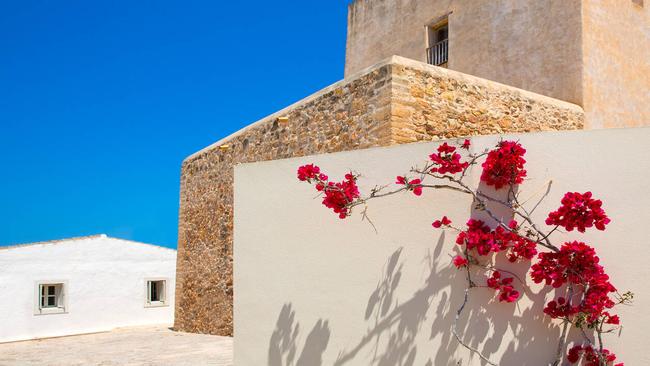
Looking for dazzling colour that thrives on neglect? Think bougainvilleas, whether large climbers or compact dwarf varieties. They flower for months, love the sun and heat, need little watering, and rarely have any pests or diseases.
Originally from tropical South and Central America, bougainvilleas are now ubiquitous across the Mediterranean, South East Asia and the Pacific. In the tropics and subtropics they can flower year round; elsewhere they peak in spring and summer. They’re ideal in coastal gardens where they happily cope with salt winds, heat and humidity. Established plants can take light frosts, but in cold areas the foliage tends to drop over winter.
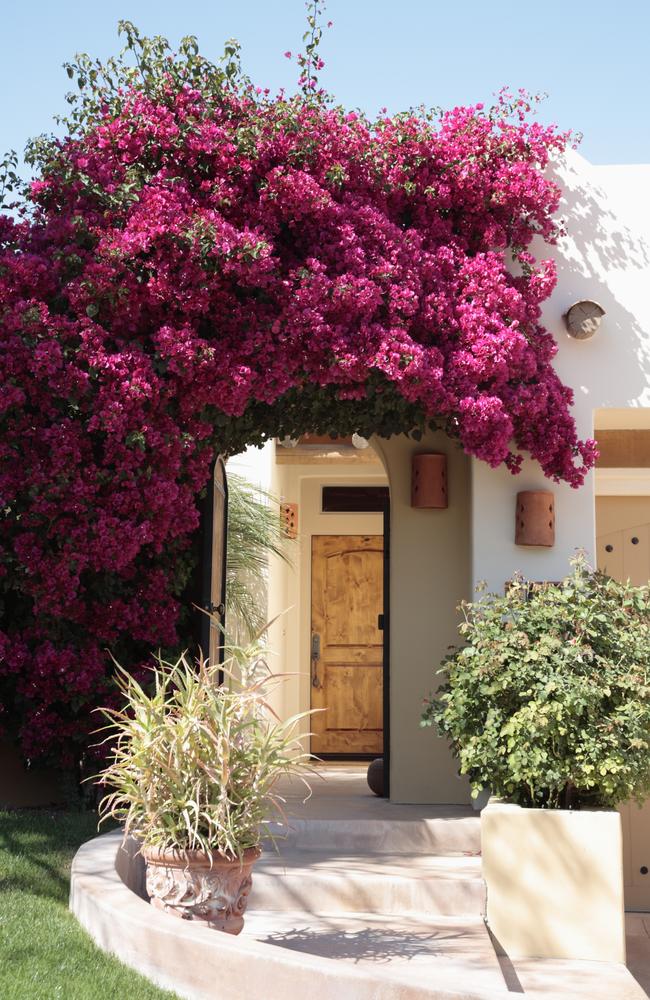
Botanically, the vibrantly coloured, papery “petals” are bracts or modified leaves, which surround a cluster of three tiny, pale, tubular flowers. The colour range includes white, pink, crimson, red, mauve, purple, orange, peach and gold, and some change colour as they age. There are double-flowered varieties too. Some have additional interest from variegated leaves – ‘Raspberry Ice’ is a favourite for its cream-and-green leaves that contrast spectacularly with crimson flowers.
Knowing that bougainvilleas flower on new growth, generally in cycles of about six weeks, helps with optimal pruning. For smaller plants that you can reach easily, routinely look for small stems that have dropped all their flowers then prune off most of that stem; new shoots that develop will bear new flowers. Alternatively, you can prune lightly all over in autumn. If you don’t prune at all, you might end up with big mess. Avoid heavy pruning as this stimulates the production of vigorous “water shoots”, which rapidly become thick, woody stems that produce long, curved thorns instead of flowers. Remove any water shoots at the base if they appear.
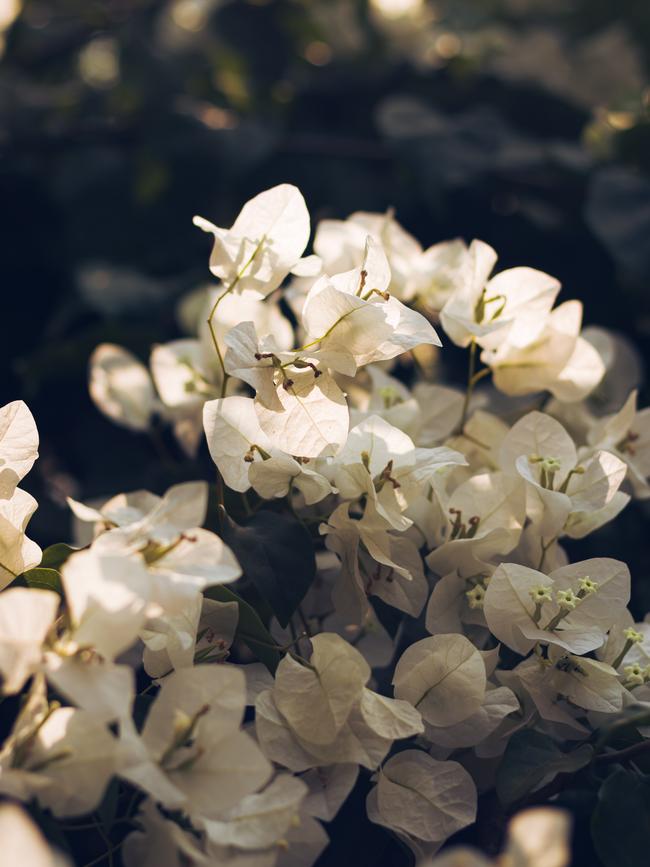
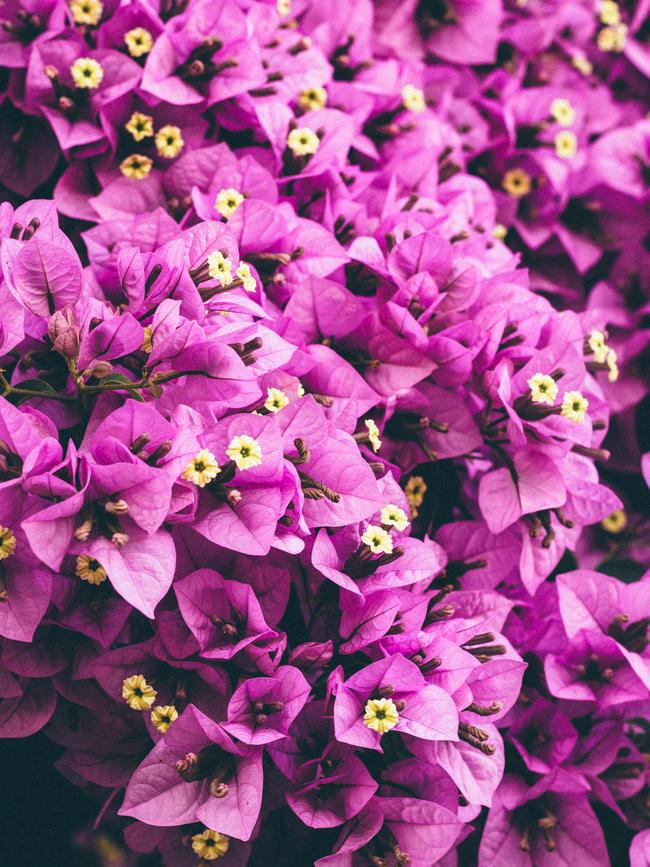
Bougainvilleas come in all sizes – the most rampant can reach 20m, such as purple ‘Magnifica’, used to such great effect along the 1km-long steel pergola at Brisbane’s South Bank Parklands. Their greatest impact is when trained against a white wall – think those iconic images of scarlet blooms on Greek islands – but they can cover sunny fences too or be trained across carports or verandas. Just check that the plant’s height suits the spot before you buy.
Dwarf varieties such as the Bambino series are great for pots, troughs, window boxes and small spaces. Bred by Queenslanders Jan and Peter Iredell since 1997, most of this extensive range are 60cm to 1m tall and some have variegated foliage. Their Babybino range are just 50cm high with horizontal branching and few thorns; they’re great as groundcovers, or for spilling over a pot or hanging basket.
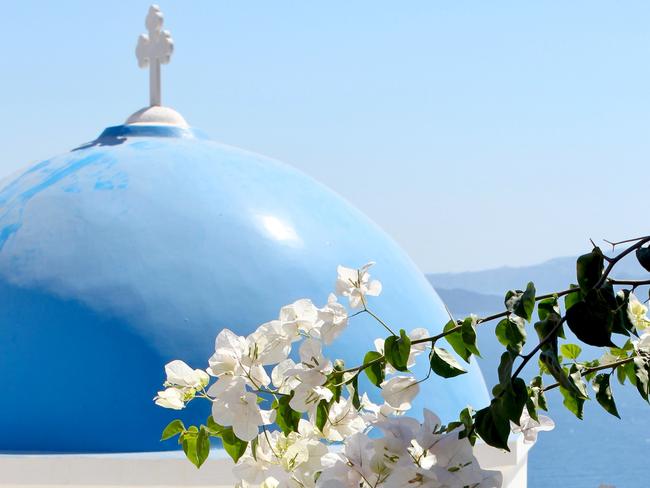
Bougainvilleas flower most profusely in full sun – in shade you’ll get fewer flowers and larger leaves. They need free-draining soil and dislike cold, wet and heavy soil. When planting, try not to disturb the easily damaged roots, otherwise they can be slow to establish and get growing. Mulch is beneficial; apply a flowering fertiliser in spring and summer.
-
Q&A
My lavender bushes finished flowering recently. How should I prune them? Alison Main, Melbourne
Lavenders need to be pruned at least annually, from their first year, in order to form bushy plants with plenty of flowers. The timing depends on what variety you have but as a general rule, prune after a flush of flowers, by at least a third but certainly behind the spent flowers. Some varieties can flower again. French lavender usually has a lull in autumn in its almost constant flowering, so prune then. Be careful not to cut lavenders back into woody stems, as these generally don’t reshoot.
Our soil remains alkaline, despite our best efforts with compost, manure and one dose of sulfur. What shrubs, climbers or perennials can we grow under a pergola? Maria Jenkins, Mandurah, WA
Some plants prefer or tolerate alkaline soil. In sun, grow lavenders, rosemary, bearded irises, dwarf Buddleia, Phacelia, geraniums, red hot poker (Kniphofia) marjoram and thyme. In part shade try dwarf abelias, Viburnum tinus, Correa pulchella, Euonymus, Aucuba, fuchsias and hydrangeas. Climbers include grapevines, wisteria, Jasminum officinale, Virginia creeper and clematis.
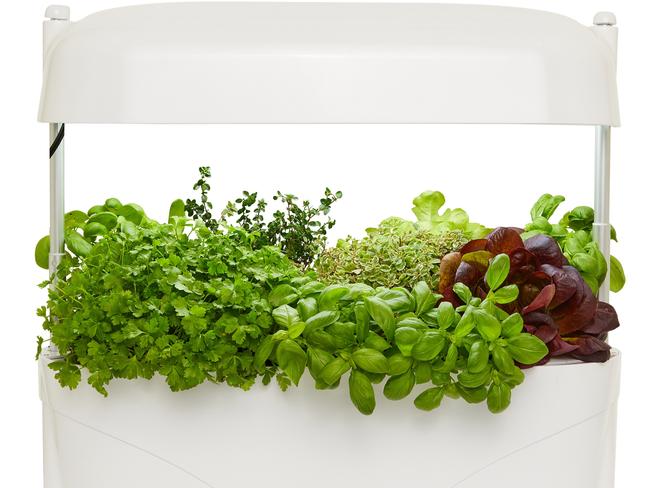
When is the correct time to cut back purple fountain grass? Florence Swan, Brisbane
Pennisetum varieties should be cut back in late winter to get rid of all the old, tatty foliage and spent flower spikes, allowing new growth to come through in spring. You can do this every year or two.
Send your questions to helenyoungtwig@gmail.com. The best question for February wins a Kitchen Garden by Vegepod ($349) for growing edibles indoors.

